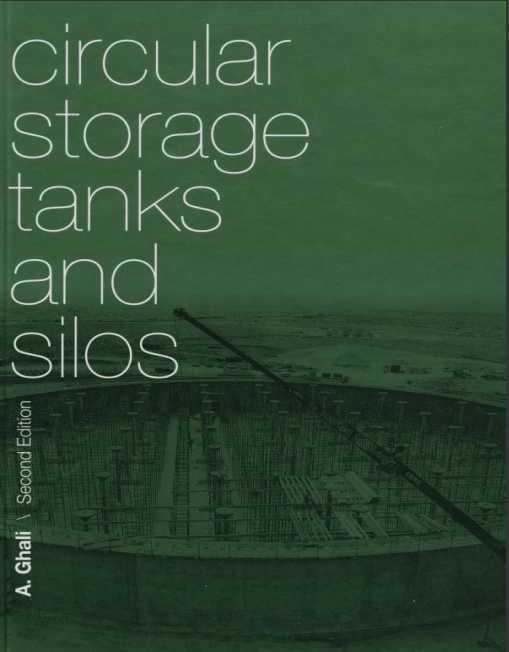Circular Storage Tanks and Silos second edition

Preface to second edition
The contents of this edition include six new chapters, added to the chapters of the first edition. There is a new chapter on the finite-element method of analysis. A conical-shaped finite element, which is relatively simple but gives accurate results, is selected. The wall of a tank or a silo, monolithic with the cover or the base, is idealized as an assemblage of small axisymmetrical shell elements, each in the shape of a frustum of a cone.
Creep and shrinkage of concrete as well as relaxation of prestressed steel produce time-dependent variations in stresses in sections and also in the internal forces. A chapter focuses on the analysis of these variations.
Another chapter is added to help in the design of circumferential prestressing of circular cylindrical tank walls, which are monolithic with the base (as opposed to sliding on the base). The distribution of the prestressing is designed to minimize the bending moments in the wall in the vertical direction.
Finally, there are three new chapters concerned with analysis and design for serviceability of concrete tanks and silos. Analysis of the internal forces and stresses before and after cracking is discussed, including the effects of temperature variations and shrinkage (or swelling) of concrete. Control of cracking is explored and equations are given to calculate the minimum amount of reinforcement.
Like the first edition, the new one is intended to be suitable for use by practising engineers, students and researchers in any country. No specific system of units is used in the major part of the solved examples. However, there are a small number of example problems where it is advantageous to use actual dimensions of the structure and specify the magnitude of forces. These problems are set in SI units and British units (still common in the United States). The answers and the graphs related to these problems are presented in both SI and British units. The methods of analysis and design procedures presented are independent of codes. However, occasional reference is made to European and North American codes. The inevitable future revisions of the codes should not influence the relevance of the material presented.
The new chapters have been reviewed by Dr G.S.Tadros, Consulting Engineer, Calgary, Canada. Mr N.Ariyawardena, a PhD Candidate at the University of Calgary, checked solutions of some of the examples and prepared the figures for the new chapters. Miss Tracey Robertson typed the manuscript. The author is grateful to them as well as to the engineers whose views have helped in selecting the contents of the second edition.
A.Ghali Calgary, Alberta, Canada July 1999
Download
http://s18.alxa.net/s18/srvs2/01/Cir....and.Silos.rar
